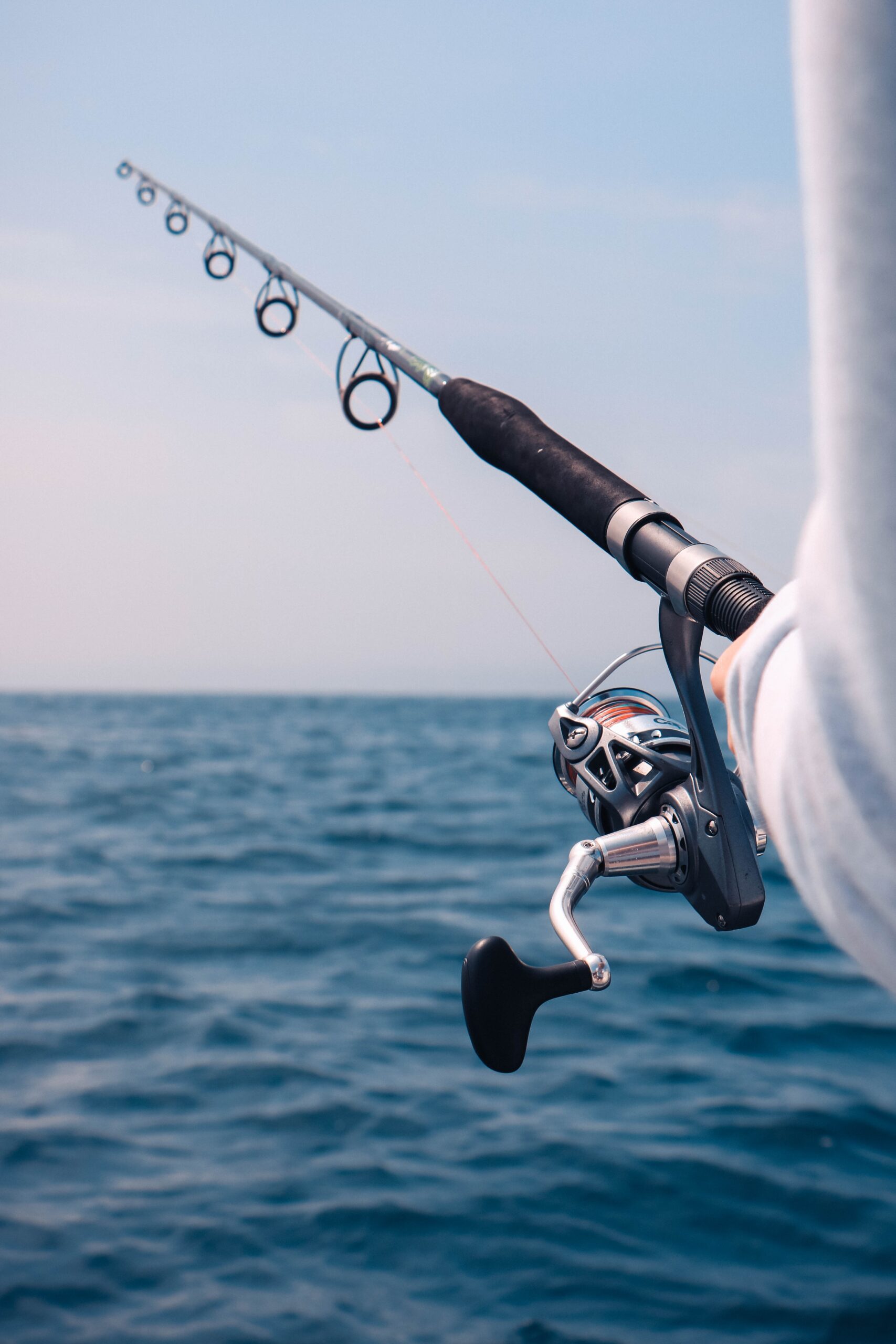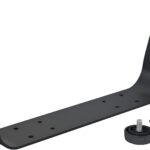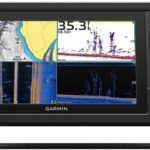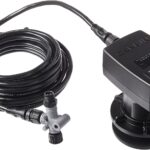If you’ve always wanted to try your hand at fishing but weren’t sure where to begin, look no further! In this article, we’ve compiled the top 10 tips for beginner anglers to help you get started with confidence. From choosing the right equipment to mastering casting techniques, these expert tips will set you on the path to becoming a successful angler in no time. Whether you’re planning to fish in freshwater or saltwater, these valuable insights will ensure that your fishing adventures are enjoyable and rewarding. So grab your fishing rod and let’s dive into the world of angling!
Choose the Right Gear
Research different types of fishing gear
When starting out as a new angler, it’s essential to research and understand the different types of fishing gear available. Fishing gear can vary depending on the type of fishing you plan to do, such as freshwater or saltwater, and the species you intend to target. Take the time to explore the various options, including fishing rods, reels, lines, and hooks. This research will help you make an informed decision and choose gear that best suits your needs and fishing style.
Understand the importance of a fishing rod and reel
The fishing rod and reel are the foundation of your fishing gear. A good quality fishing rod can make a significant difference in your fishing experience. Consider factors like rod length, material, and action. Longer rods are often preferred for casting distance, while shorter ones offer better control. The reel you choose should be durable, lightweight, and have a smooth drag system. Understanding the importance of a well-balanced rod and reel setup will enhance your angling skills.
Select the appropriate fishing line and hooks
Choosing the right fishing line is crucial, as different types of lines have different strengths and advantages. Monofilament lines are versatile and affordable, making them an excellent choice for beginners. Fluorocarbon lines offer exceptional invisibility underwater and are ideal for clear water conditions. Braided lines provide excellent strength and sensitivity and are commonly used for heavy-duty fishing. Additionally, selecting the appropriate hooks is vital. Research the different hook types and sizes to ensure you have the right equipment for the fish you plan to target.
Learn about other essential fishing accessories
Apart from fishing rods, reels, lines, and hooks, there are several other accessories that can enhance your fishing experience. Some common accessories to consider include tackle boxes for organizing your hooks, lines, and lures, fishing nets for safely landing fish, and a fishing hat and sunglasses to protect yourself from the sun’s harmful rays. It’s also advisable to carry a first aid kit and insect repellent to ensure your safety and comfort during your fishing trips. Taking the time to learn about and invest in these essential fishing accessories will make your angling adventures more enjoyable and successful.
Learn the Basics of Casting
Master the basic overhead cast
Casting is a fundamental skill that every angler should master. The overhead cast is the most common and basic casting technique and is essential for accurately placing your bait or lure in the desired location. To perform an overhead cast, start by holding the rod with your dominant hand and grasping the reel with your other hand. With a smooth and controlled motion, bring the rod back overhead and then bring it forward, releasing the line at the right time to allow the bait or lure to reach the desired location. Practice this cast repeatedly until you feel comfortable and can consistently place your bait accurately.
Practice the sidearm cast
In addition to the overhead cast, it’s beneficial to learn the sidearm cast. This technique is useful in situations where overhead obstacles limit your casting range. To perform a sidearm cast, hold the rod parallel to the ground and bring it back near your side. With a smooth motion, bring the rod forward, stopping at the right time to release the line. The sidearm cast allows for lower, more controlled casts, making it ideal for fishing in tight spaces or under low-hanging branches. By practicing both overhead and sidearm casts, you will have a versatile casting repertoire and be ready to tackle various fishing environments.
Experiment with other casting techniques
While the overhead cast and sidearm cast are considered the basics, there are numerous other casting techniques to explore. Once you have mastered the fundamental casts, it’s worth experimenting with techniques like the roll cast, pitching, and flipping. The roll cast is handy in situations where there’s limited space behind you for a backcast. The pitching and flipping techniques are often used for precisely placing lures or bait in specific locations, such as under docks or overhangs. Trying out different casting techniques will improve your versatility and increase your chances of success in different fishing scenarios.
Improve accuracy and distance through practice
Casting accuracy and distance are skills that develop with practice. Plan regular practice sessions in different environments to challenge yourself and refine your casting abilities. Experiment with casting into tight spots, casting into the wind, and casting over long distances. These practice sessions will not only improve your accuracy and distance but also help build muscle memory and fine-tune your timing. Remember to be patient with yourself, as casting requires practice and a willingness to learn from your mistakes. The more you practice, the more confident and accurate you will become in casting.

Study Local Fishing Regulations
Research fishing licensing requirements
Before you embark on your fishing journey, it’s crucial to understand the fishing licensing requirements in your area. Fishing licenses are typically required by law and are designed to support conservation efforts and ensure sustainable fishing practices. Research the specific licensing requirements for your region, including whether you need a license for freshwater or saltwater fishing. Make sure to obtain the necessary licenses and permits and carry them with you when fishing to avoid fines or penalties.
Learn about fishing seasons and restricted areas
To protect fish populations and their habitats, fishing seasons and restricted areas are often established. These regulations aim to prevent overfishing during sensitive periods and protect spawning grounds. Take the time to familiarize yourself with the fishing seasons for different species in your area. Additionally, research any restricted areas where fishing is prohibited or limited. By adhering to these regulations, you contribute to the conservation of fish populations and ecosystems while also ensuring a sustainable fishing experience for future generations.
Understand catch limits and size restrictions
Catch limits and size restrictions are put in place to ensure the preservation of fish populations and maintain a balanced ecosystem. These limits specify the number of fish an angler can catch and often include requirements for minimum and maximum sizes. It’s essential to educate yourself about the catch limits and size restrictions for the fish species you plan to target. By adhering to these guidelines, you not only respect the sustainability of the fishery but also help maintain healthy fish populations for future anglers to enjoy.
Stay informed about any changes in regulations
Fishing regulations can change over time, reflecting fluctuations in fish populations and environmental conditions. Stay proactive and informed by regularly checking for updates or changes in fishing regulations. Local fishing authorities or departments of fish and wildlife often provide resources and updates on their websites. Following these changes will ensure that you are up to date on any new regulations or adjustments to catch limits, size restrictions, or fishing seasons. By staying informed, you can be a responsible angler and contribute to the overall conservation of fish populations.
Get Familiar with Different Fish Species
Identify common fish species in your area
Knowing the common fish species in your area is essential for successful fishing. Research the fish species that inhabit the waters you plan to fish in and familiarize yourself with their physical characteristics, habitat preferences, and behavior. This knowledge will help you target the right species and use the appropriate fishing techniques and baits.
Learn about their habitat and feeding habits
Each fish species has specific habitat preferences and feeding habits. Understanding these factors will greatly increase your chances of catching fish. Research the types of habitats preferred by the fish species you want to target, such as shallow waters, deep pools, or areas near structure like rocks or submerged logs. Additionally, learn about the specific feeding habits of different fish, such as whether they are bottom feeders, surface feeders, or prefer certain types of prey. This understanding will guide your choice of fishing spots and bait selection.
Understand the best techniques and baits for each species
Different fish species require different techniques and baits to entice them to bite. Some fish may be more attracted to live bait, while others may prefer artificial lures. Research and experiment with various fishing techniques and baits to determine those most effective for the fish species you are targeting. For example, bass may respond well to soft plastic lures, while trout may be enticed by live bait like worms or crickets. By understanding the best techniques and baits for each species, you maximize your chances of a successful and rewarding fishing experience.
Stay open to trying new fishing techniques
Fishing is a constant learning process, and staying open to trying new fishing techniques can be rewarding. As you gain experience and confidence, challenge yourself to explore different fishing techniques that you may not have tried before. Whether it’s fly fishing, trolling, or ice fishing, experimenting with new techniques can expand your angling skills and open up new opportunities to catch different fish species. Embrace the learning process and view each fishing trip as an opportunity to grow and expand your knowledge and abilities.
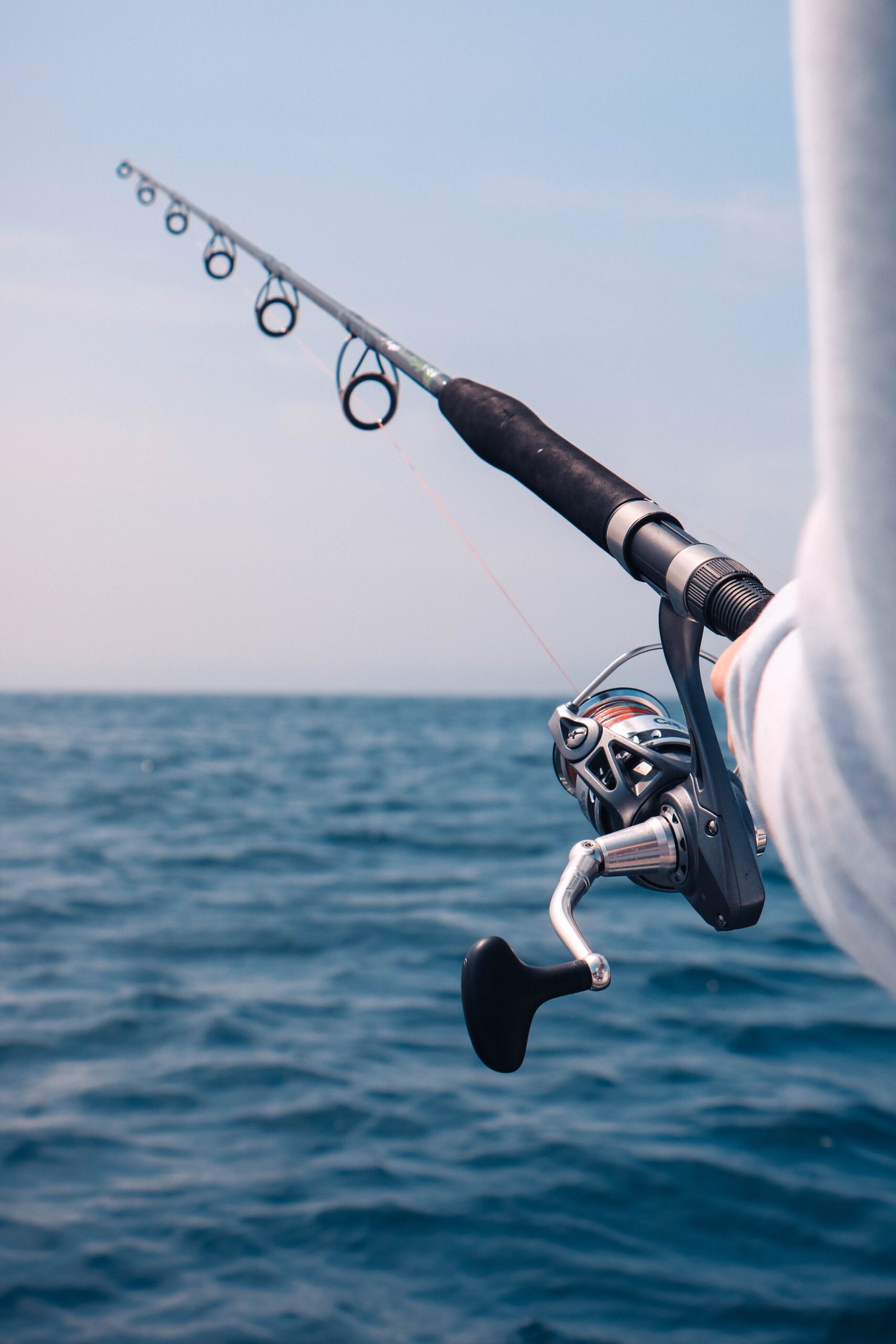
Practice Patience and Observation
Accept that fishing requires patience
Patience is a virtue in fishing. While some days may be action-packed, fishing is often a waiting game. Accept that fishing requires patience and embrace the tranquility and serenity that comes with it. Enjoy the opportunity to disconnect from the stresses of daily life and immerse yourself in nature. Remember that fishing is not only about catching fish but also about appreciating the beauty of the surroundings and the peace that comes with spending time in the great outdoors.
Observe the water and study fish behavior
Being observant is a crucial skill for successful fishing. Take the time to observe the water and study the behavior of fish. Look for signs of fish activity, such as jumping or splashing, or ripples and disturbances on the surface of the water. These can indicate the presence of feeding fish. Pay attention to the movement of birds or the behavior of other anglers as well, as they can be indicators of fish activity. By being observant and studying fish behavior, you can make informed decisions about where and when to cast your line.
Pay attention to weather conditions
Weather conditions play an important role in fishing success. Changes in weather patterns can affect fish behavior, making them more active or less likely to bite. Pay attention to factors like temperature, wind direction, cloud cover, and barometric pressure. Warmer temperatures can increase fish activity, while sudden changes in pressure may cause them to become less active. Wind direction can influence the movement of baitfish, which, in turn, attracts larger predator fish. By staying aware of weather conditions, you can adapt your fishing techniques and increase your chances of landing a catch.
Learn from experienced anglers
Experienced anglers can be valuable sources of knowledge and guidance. Observe and learn from those who have spent years honing their fishing skills. Engage in conversations with fellow anglers, whether at local fishing spots, bait shops, or online forums. Seek advice, ask questions, and listen to their experiences and insights. Joining a fishing community or finding a mentor can provide you with a wealth of information and shortcuts to becoming a more skilled and knowledgeable angler. Embrace the spirit of camaraderie within the angling community and support each other’s growth and development.
Choose the Right Fishing Spot
Research potential fishing spots in your area
The success of a fishing trip often depends on choosing the right fishing spot. Research and identify potential fishing spots in your area. This can be done through online resources, local fishing guides, or by talking to experienced anglers. Look for locations known for their abundance of fish and good fishing conditions. Consider factors like accessibility, distance from your location, and the type of fishing you prefer. By doing the research, you can increase your chances of finding productive fishing spots and discovering new places to enjoy your favorite hobby.
Consider factors like accessibility and safety
When choosing a fishing spot, it’s essential to prioritize accessibility and safety. Ensure that the location is easily accessible and within a reasonable distance from your home or accommodation. Consider the level of physical fitness required to reach the fishing spot, especially if you have any mobility limitations. Additionally, assess the safety of the area, paying attention to factors like water currents, potentially hazardous terrain, and any applicable warnings or advisories. Prioritizing accessibility and safety will contribute to a more enjoyable and worry-free fishing experience.
Look for signs of fish activity
Successful fishing often depends on finding areas where fish are active. Look for signs of fish activity, such as jumping fish, schools of baitfish, or disturbances on the water’s surface. These signs indicate the presence of feeding fish and can help direct your efforts. Areas near structure like rocks, submerged logs, or vegetation are also more likely to attract fish. By closely observing the water and being attuned to signs of fish activity, you can increase your chances of success and have a more fulfilling fishing experience.
Explore different types of fishing environments
Diversify your fishing experiences by exploring different types of fishing environments. Freshwater ponds, rivers, lakes, and saltwater beaches or piers all offer unique angling opportunities. Each environment presents its challenges and rewards. Freshwater fishing may offer a chance to catch species like bass, trout, or catfish, while saltwater fishing can provide opportunities to land larger gamefish like tuna or marlin. By exploring different fishing environments, you expand your knowledge, skills, and encounters with different fish species, creating a more well-rounded angling experience.
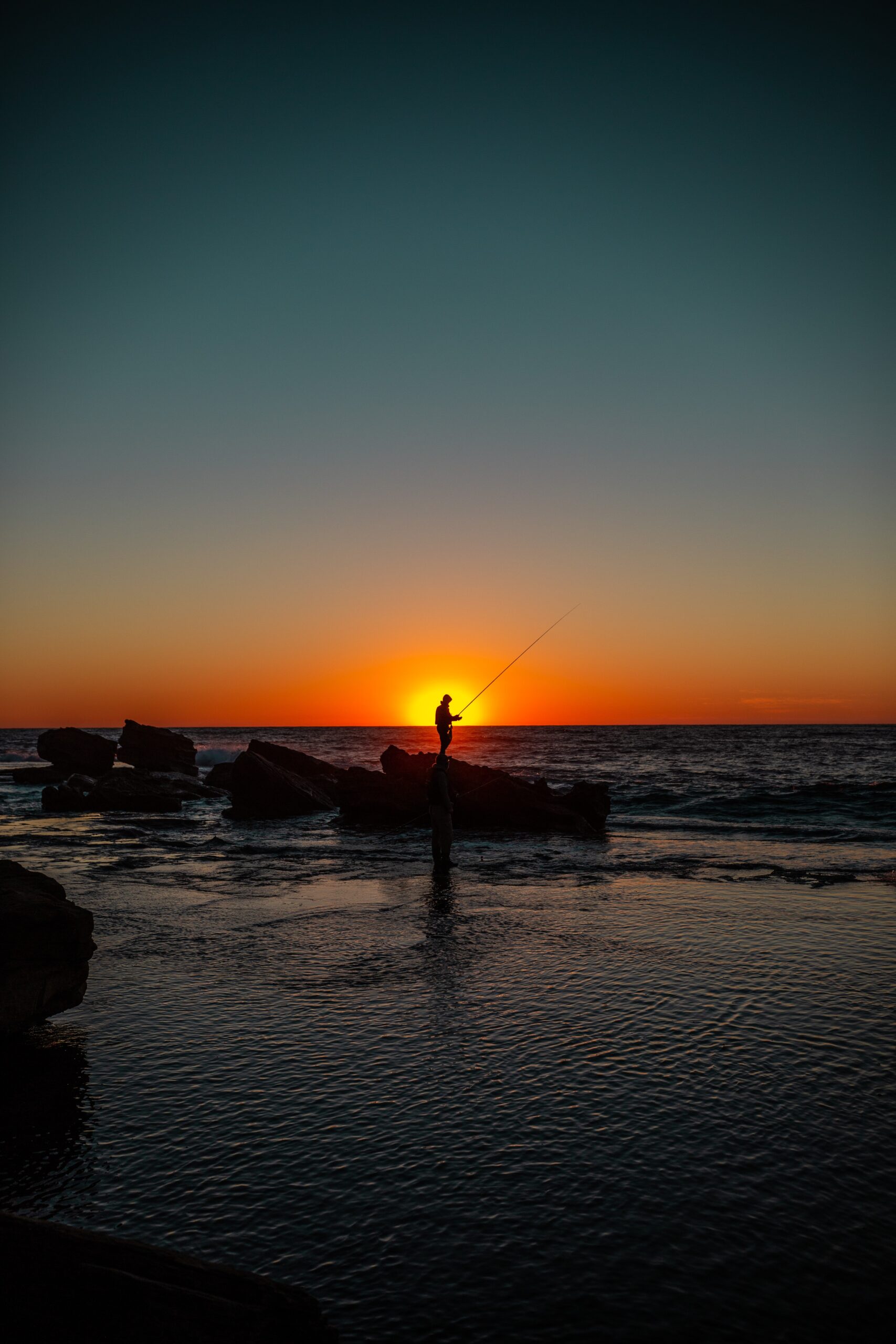
Understand and Use the Right Bait
Learn about live bait options
Live bait is a popular choice among anglers due to its effectiveness in enticing fish to bite. Research the different live bait options available in your area. Worms, minnows, crickets, and shrimp are common examples of live bait that can be used to target various fish species. Learn how to properly hook live bait and present it in a way that mimics natural movement. Additionally, familiarize yourself with local regulations regarding the collection and use of live bait to ensure compliance and the sustainability of the baitfish population.
Experiment with artificial lures
Artificial lures are versatile and offer a wide range of options for anglers. Experiment with different types of artificial lures, such as crankbaits, soft plastics, spoons, or topwater lures. Each lure has its unique action and is designed to imitate specific prey. Research the best techniques for using each type of lure and practice different retrieval speeds and motions to find what works best for you. Artificial lures can be effective in fooling fish into striking, and mastering their use will add excitement and variety to your fishing trips.
Understand which bait is suitable for different fish species
Different fish species have specific preferences when it comes to bait. Some fish may be more attracted to live bait, while others may favor artificial lures. Research the preferences of the fish species you are targeting and choose bait accordingly. For example, trout often respond well to live bait like worms or power bait, while bass may be enticed by artificial lures like spinnerbaits or jigs. Understanding which bait is suitable for different fish species will significantly increase your chances of success on the water.
Learn how to properly rig and present bait
Properly rigging and presenting bait is essential for attracting fish and enticing them to bite. Whether using live bait or artificial lures, take the time to learn the proper rigging techniques for each type of bait. This includes selecting the right hook size and ensuring that the bait is securely attached. Pay attention to how the bait is presented in the water, mimicking the natural movement of prey and adjusting your technique accordingly. By mastering the art of rigging and presenting bait effectively, you can maximize your chances of enticing fish to strike.
Learn Proper Hook-setting Techniques
Understand the correct way to set the hook
Hook-setting is a critical skill that every angler should master. To effectively set the hook, it’s important to understand the correct technique. When you feel a bite or see a visible twitch on your line, resist the temptation to immediately jerk the rod. Instead, swiftly and firmly pull the rod upwards or sideways, driving the hook firmly into the fish’s mouth. This should be executed with enough force to set the hook, but not so excessive that it breaks the line. Practicing the correct hook-setting technique will greatly increase your hookup ratio.
Practice the appropriate timing and force
Timing and force are crucial elements of successful hook-setting. Practice the appropriate timing to ensure you set the hook when the fish has fully taken the bait and committed to the bite. Waiting too long may result in the fish spitting out the bait, while setting the hook too early may result in a missed opportunity. Additionally, practice applying the right amount of force when setting the hook. A smooth, controlled motion is generally more effective than a forceful jerk. Too much force may cause the hook to tear through the fish’s mouth or break the line.
Avoid excessive force that may break the line
Overexcitement or the desire to land a fish quickly can sometimes lead to excessive force when setting the hook. Avoid using excessive force, as it can result in a broken line and the loss of the fish. Be mindful of the strength of your fishing line and the species of fish you are targeting. If targeting larger gamefish, consider using heavier lines and appropriate tackle to handle the increased pressure. By using the right amount of force and considering the limitations of your gear, you can minimize the risk of line breakage and increase your chances of successfully landing fish.
Use different hook-setting techniques for different fish
Different fish species may require different hook-setting techniques to increase your chances of success. Research and experiment with different techniques to determine what works best for the fish you are targeting. For example, species with bony mouths like panfish may require a gentle hook-setting technique, while species with tougher mouths like bass or pike may require a more forceful hook set. By adapting your hook-setting technique to the specific needs of each fish species, you can optimize your chances of successful hookups.
Practice Catch and Release Ethically
Handle fish properly to minimize stress and injury
Properly handling fish is crucial for their well-being and survival, especially if you intend to practice catch and release. Always wet your hands before handling fish to minimize damage to their protective slime layer. Use a landing net whenever possible to avoid injury caused by handling. When holding a fish, support it gently but firmly, avoiding excessive pressure around the belly or gills. Minimizing stress and injury to the fish will increase their chances of survival after being released.
Use barbless hooks to ease hook removal
Using barbless hooks is highly recommended for catch and release fishing. Barbless hooks make hook removal much easier and minimize injury to the fish. The absence of a barb reduces the amount of force required to remove the hook, resulting in less damage to the fish’s mouth or lip. If barbless hooks are not available, consider pinching down the barb with pliers to create a similar effect. Using barbless hooks shows respect for the fish and promotes sustainable fishing practices.
Minimize time out of water to ensure fish survival
When catch and release fishing, it’s important to minimize the time that a fish spends out of the water. Extended exposure to air can cause damage to a fish’s gills and hinder its ability to recover after release. Whenever possible, keep the fish in the water while removing the hook or preparing for a quick photo. If taking a photo, make sure to support the fish properly and handle it quickly and gently. By minimizing the time that a fish spends out of water, you give it the best chance of survival after being released.
Follow guidelines for releasing fish
Many fishing jurisdictions have guidelines and recommendations for releasing fish safely. Educate yourself on these guidelines by consulting local fishing authorities or online resources. These guidelines often include recommendations for water depth, water temperature, and the use of live wells or fish-friendly release tools. Following these guidelines will help ensure the proper release of fish and promote their survival. Be a responsible angler and prioritize the well-being of fish to contribute to sustainable fishing practices.
Join a Fishing Community or Find a Mentor
Connect with other anglers in your area
Joining a fishing community is a fantastic way to connect with like-minded individuals who share your passion for angling. Seek out local fishing clubs, associations, or online forums where you can interact with other anglers. Participate in discussions, ask questions, and share your own fishing experiences. Connecting with other anglers will provide you with a support network and a valuable source of advice and guidance.
Seek advice and guidance from experienced anglers
Experienced anglers have a wealth of knowledge and wisdom to offer. Don’t hesitate to seek advice and guidance from those who have honed their skills over the years. Reach out to experienced anglers in your community or fishing circles and ask for their advice on specific techniques, fishing spots, or gear recommendations. They will likely be eager to share their insights and help you become a better angler.
Participate in fishing clubs or tournaments
Participating in fishing clubs or tournaments is an excellent way to enhance your angling skills and immerse yourself in the fishing community. These events provide opportunities to learn from other anglers, compete in a friendly atmosphere, and exchange experiences and strategies. Engage in these activities with an open mind and a desire to learn and grow as an angler. The camaraderie and shared passion that comes with participating in fishing clubs or tournaments will enhance your overall angling experience.
Learn from others’ experiences and share your own
The angling community is built on a collective knowledge and shared experiences. Benefit from the experiences of other anglers and learn from their successes and failures. Listen to their stories, learn from their tactics, and apply the lessons they’ve learned to your own fishing adventures. Likewise, don’t hesitate to share your own experiences with other anglers. By contributing to the collective knowledge of the fishing community, you help create an environment of learning, growth, and camaraderie.
In conclusion, getting started as a beginner angler can be an exciting and rewarding journey. By following these top 10 tips, you can approach fishing with confidence and lay a strong foundation for a lifelong passion. Remember to choose the right gear, learn the basics of casting, study local fishing regulations, get familiar with different fish species, practice patience and observation, choose the right fishing spot, understand and use the right bait, learn proper hook-setting techniques, practice catch and release ethically, and join a fishing community or find a mentor. Embrace the learning process, enjoy the beauty of nature, and have fun as you embark on your angling adventures.

